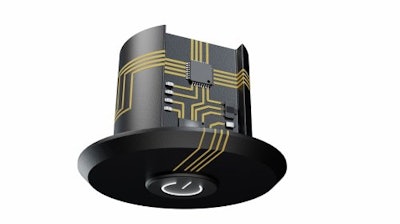
HARTING’s 3D-Circuits technology makes it possible to combine mechanical and electronic functions into a single component to fit into the smallest spaces.The electronic circuit can be built into the device itself, making it more compact and functionally dense. By using injection-molded circuit boards, the number of process steps, assembly times, and parts can all be drastically cut down.
3D-MID technology has become incredibly useful in many industries, especially so in the world of medical devices, where it drives miniaturization.
How 3D-MID Technology works
Device designers can go above and beyond the limits of traditional manufacturing with the help of 3D-Circuits. The sky's the limit when electrical and mechanical functions can be unified in a single three-dimensional component.
These components are constructed using very malleable bits of plastic through injection molding. This process makes it possible to create anything with precise measurements according to the requirements laid down by final customer usage.Injection molding is perfect for mass production of products with complex geometries and in miniature sizes, such as the components of high-end medical devices.
A process called laser direct structuring (LDS), developed by LPKF Laser & Electronics in 1996, can then draw the needed electrical trace layout to these components, which will be made conductive in a subsequent chemical plating process. As HARTING unifies all these process steps under one roof, customers benefit from quality “Made in Switzerland”.
With 3D-MID technology, there are virtually no limitations for designers. This opens up a world of possibilities and potentially huge savings for manufacturers and consumers alike. By combining mechanical and electrical hardware, the design and creation of electronic devices with very complex functions become easier and much more affordable.
Because of its adaptability, mechatronics can be used in an ever-expanding variety of medical applications, ranging from bed positioning systems to robotic surgical equipment.
3D-MID Technology in the Medical Field
In the last few years, 3D printing has accelerated many advancements in the world of medicine, with millions of people benefiting from components and devices created with ease. And now, 3D-MID is poised to change the face of medicine forever.
This technology takes all these advancements one giant step further by using mechatronics to create devices with an even wider range of electronic functions that fit in the smallest of spaces.Mechatronics allows for the extreme downsizing or miniaturizing of medical applications, enabling examination, sensing, and monitoring from within the patient. With such technology, medical devices can be designed to be much less invasive, leading to a significant improvement in patient care. With its many years of experience - HARTING started its activities in this field in 2003 – the team is familiar with the requirements of the medical market.
The numerous series production projects confirm this. Taking large medical machines and devices and putting them into a more compact package is a big part of what 3D-Circuits brings to the table. It offers significant improvements to changing how medical devices are used today.One of the most important benefits of this technology is that it makes these advances possible without sacrificing quality.
You may think that shrinking a medical device down would make it less powerful or effective, but with 3D-MID, that isn’t the case at all.In fact, as 3D-Circuits continues to grow in popularity, it will only get better, opening up new options for even smaller and more effective medical devices, from hearing aids and implants to surgical and dental instruments.
The Benefits and Uses of 3D-MID Technology
Miniaturization is one of the most critical trends in healthcare that affects how mechatronics technology is used. The development of ever-smaller instruments, devices, and equipment enables less invasive treatment methods, allowing faster recovery times and much-improved patient care.
These micro actuators and miniature sensors also propel the development of small mechatronics systems for the following applications:-Handheld diagnostics for use at the point of care, including ultrasound and blood testing-Scientific instruments for flow cytometry, DNA identification, pathogen detection, and DNA sequencing-Medical imaging using small, precise modules for lens control and laser tuning-Implantable devices that can be dynamically adjusted in-place-Mobile miniature robots-Micropumps and auto-injectors for drug delivery products


















